This match signified the end of a dramatic round of 16 at the FIFA Women’s World Cup, with the winner of this match facing Italy in the quarter-finals on Saturday.
While many predicted this game to be somewhat of a walk in the park for the Netherlands, it was anything but and the Dutch were quite fortunate to come away with the victory. This tactical analysis will establish how the Dutch narrowly proceeded through the competition despite showing signs of dwindling in the latter stages of the game.
Line-ups
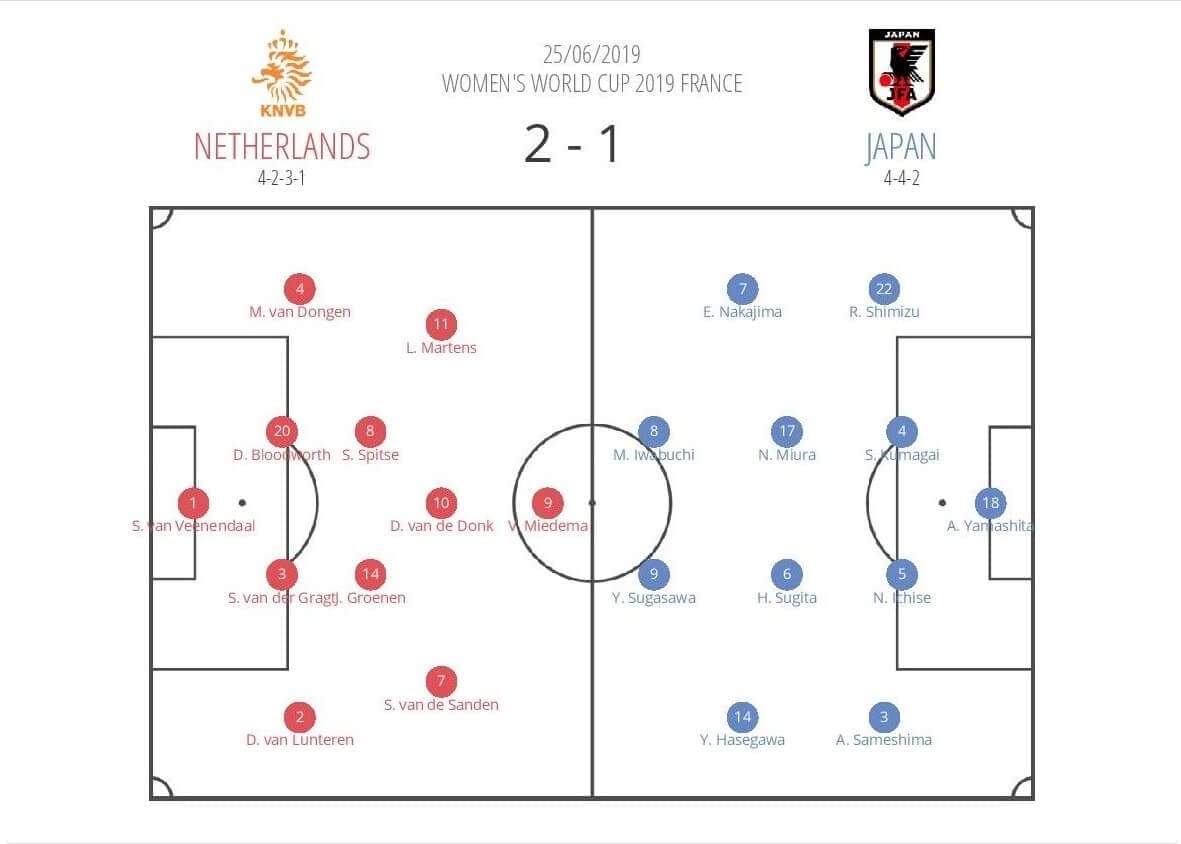
Japan’s manager, Asako Takakura made three changes to the side which lost their final group game to the Lionesses. In came Yuika Sugasawa for Kumi Yokoyama, Yui Hasegawa for Jun Endo and Narumi Miura for Rikako Kobayashi. Despite these changes, Takakura opted for the same 4-4-2 formation which her side has played throughout the tournament.
Meanwhile, Sarina Wiegman made only one change to her side’s last group game, with the introduction of Stefanie van der Gragt for Anouk Dekker. Wiegman fielded her team in a 4-2-3-1 shape which resembled a 4-3-3 in attacking phases.
Dutch defensive strategy
Both these teams immediately sought to get bodies forward in support of their respective attacks but they also liked to press aggressively, creating an end-to-end encounter for much of the game.
Ahead of the first big chance, Japan were looking to progress the play to their midfielders from Saki Kumagai. The Dutch players did not press the Japanese defenders on the ball, rather when the ball was played to either Miura or Sugita, a multitude of bright orange shirts converged on the ball carrier.
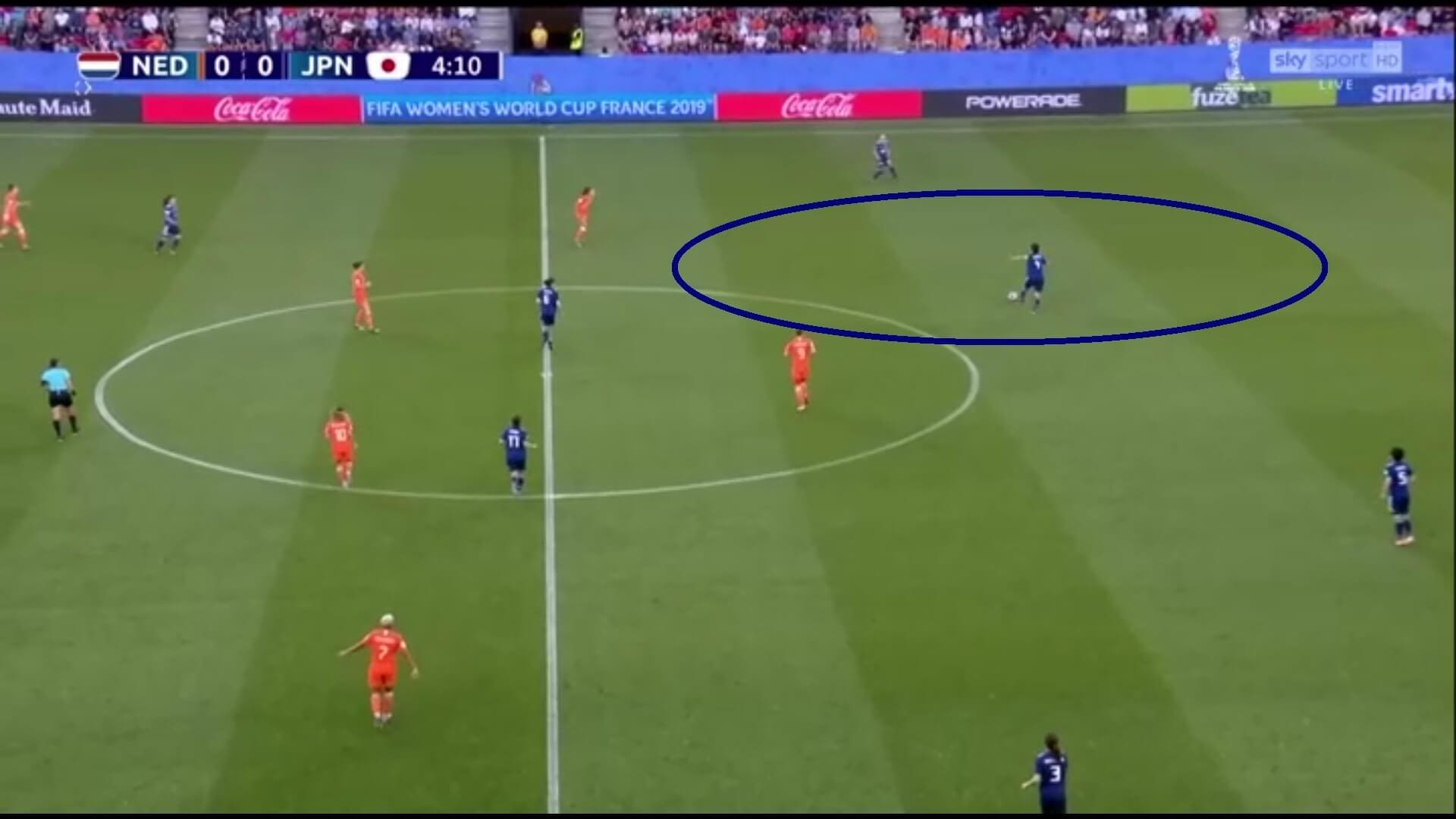
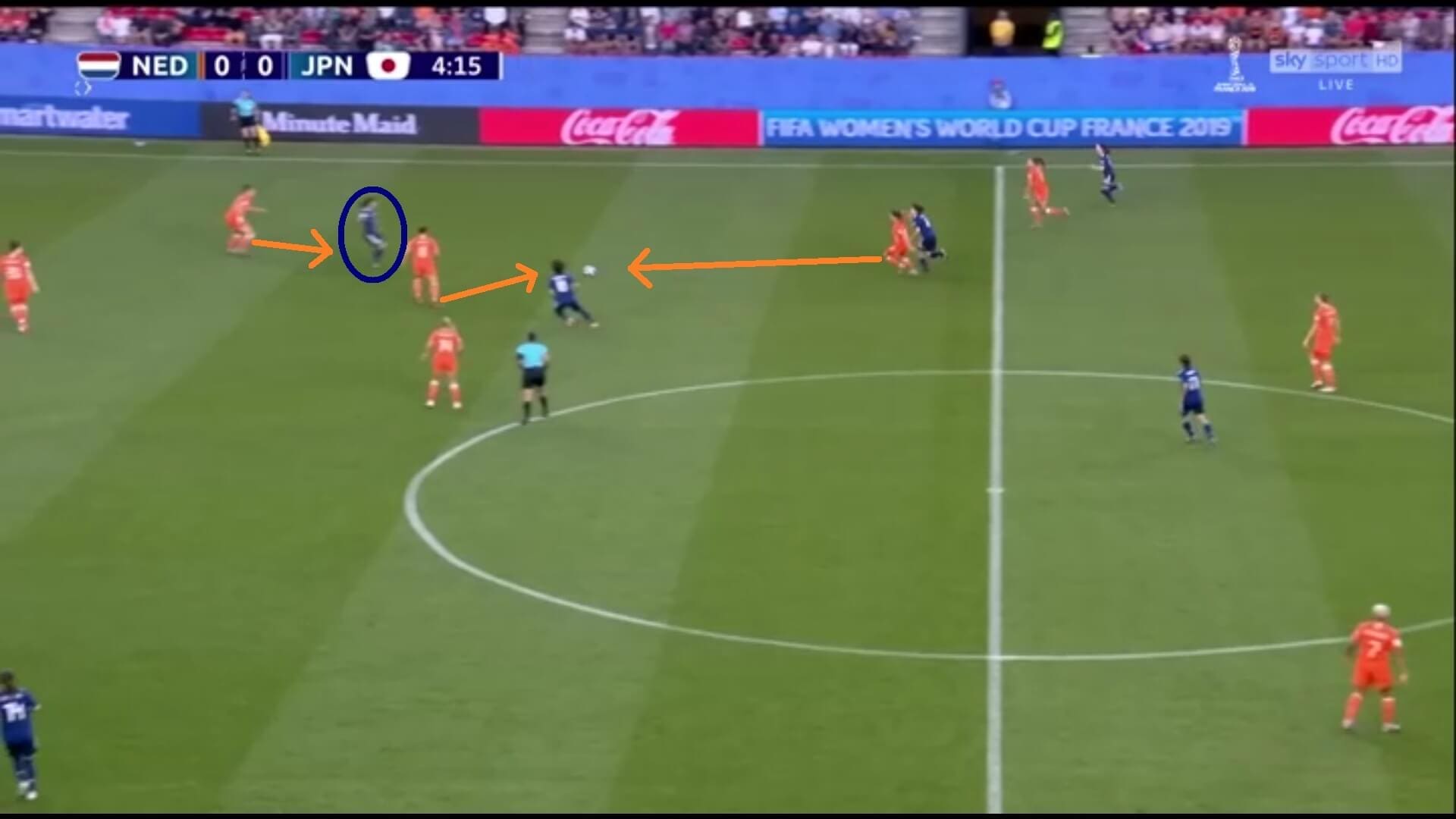
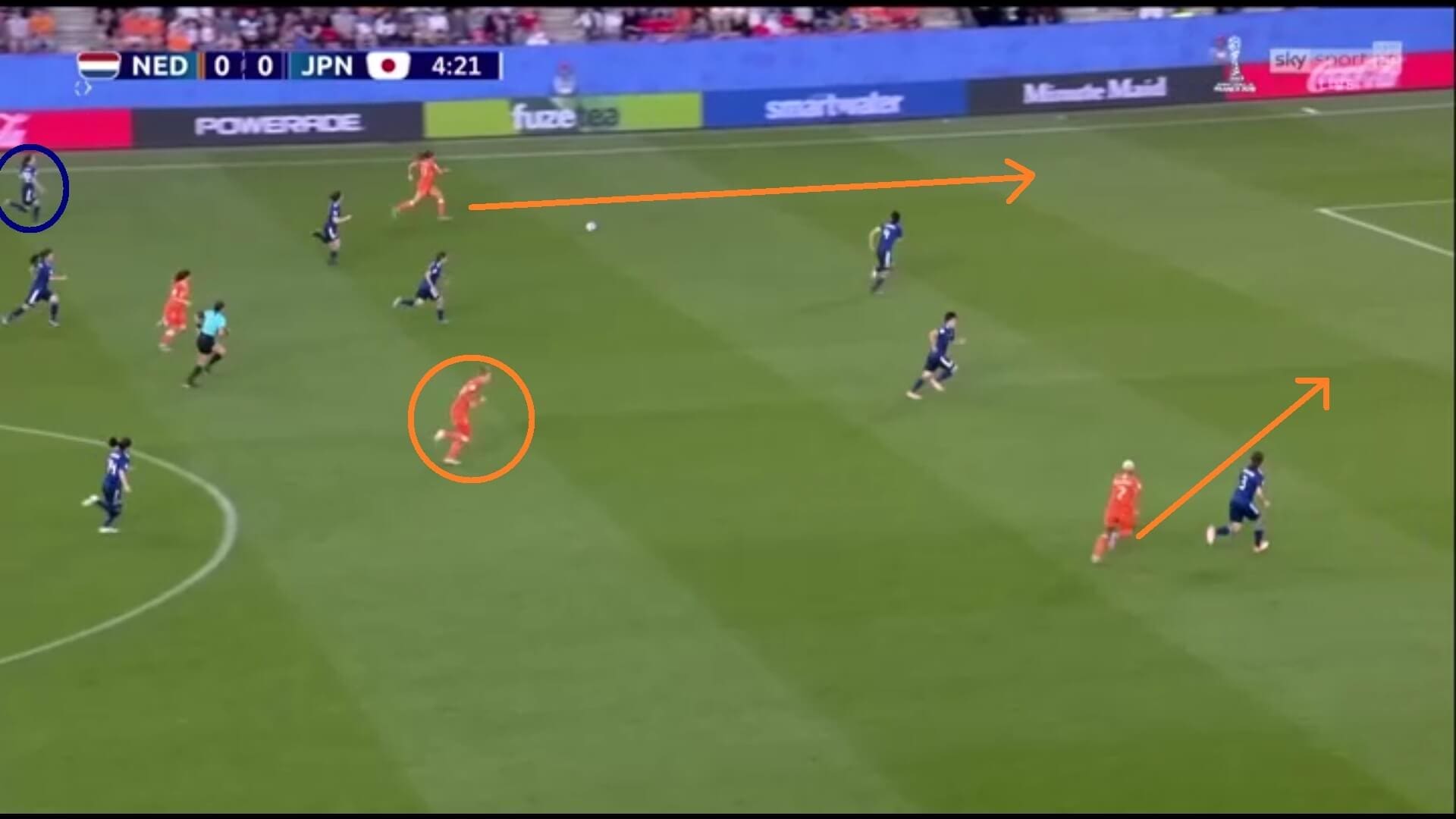
In the above sequence of images, the Netherlands took advantage of Japan’s attack-minded full-backs in search of the game’s opening goal. By allowing Kumagai to bring the ball forward, the Dutch players lured Japan into activating their press. Kumagai played the ball to Sugita who then passed to Nakajima while Shimizu, the right back, instinctively drove forward in support of her right midfielder.
However, Japan’s play broke down as van Dongen, Spitse, and van de Donk all pressed Nakajima out wide and caused a turnover. As the Netherlands sought to counter from this, they had their dangerous wingers rushing forward with Martens exposing the space left by Shimizu on the right side of Japan’s defence. Such holes on either flank of the Japanese defence against a side like the Dutch were lucky not to have been properly punished.
This was a common feature of the Dutch women’s defensive strategy as the players counter-pressed aggressively whilst also overloading in the wide areas. When Japan sought to build centrally, either central midfielder, Sugita or Miura, picked up the ball in front of the Dutch midfield line. Upon receiving the ball, the Dutch midfielders sought to pressure Miura and Sugita to pass wide and overload when they did.
The variety in the Dutch pressing strategy caused Nadeshiko Japan some problems in the first half. There was a sharp uptake in the intensity of the Dutch press in advanced areas of the pitch. This press was only triggered when the Japanese players struggled to find appropriate passing options, so De Oranje Leeuwinnen could mark Japanese passing options tighter whilst harrying the player in possession.
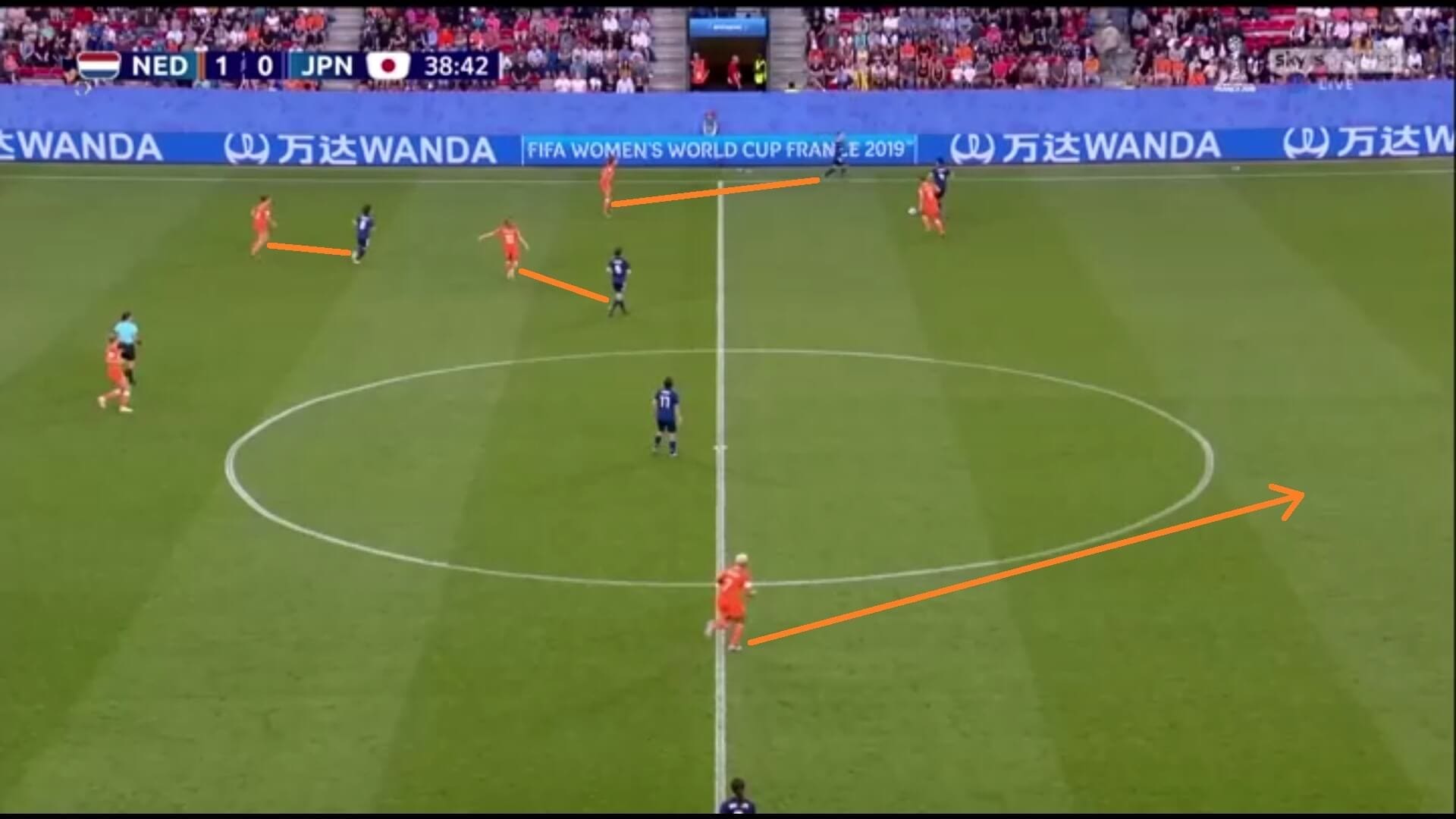
A turnover in this position would be greatly advantageous to the Netherlands, considering van de Sanden’s position at the bottom of the picture. The Olympique Lyonnais winger sensed a turnover was coming and was in a position to pounce for a Dutch counter.
Netherlands’ dynamic midfielders
Given the compact nature of Japan’s defensive shape, it was relatively easy for the Dutch side to create chances with their customary lofted diagonal balls from defence to midfield. The Netherlands did this with the help of their central midfield players, van de Donk on the left and Groenen on the right.
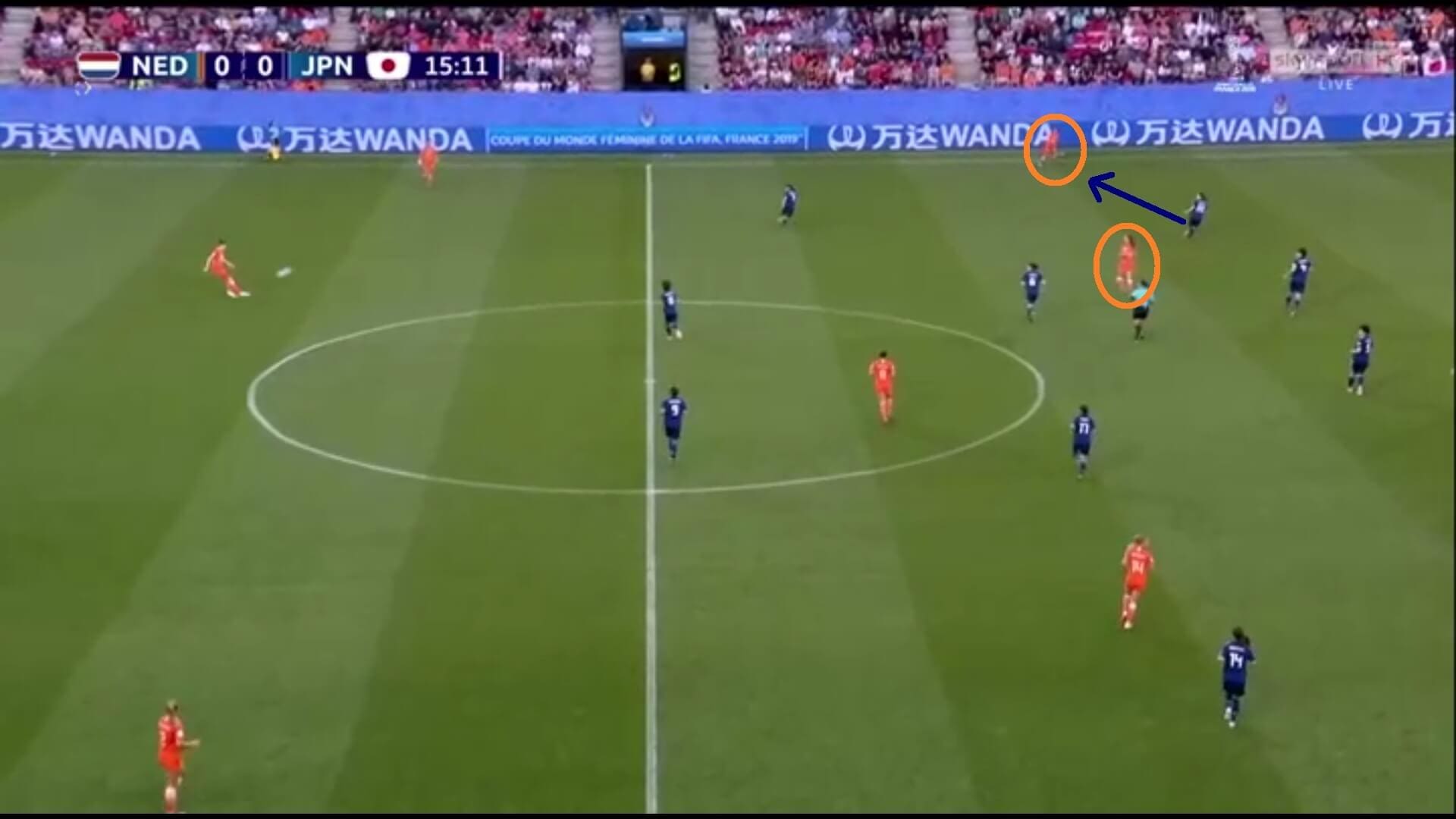
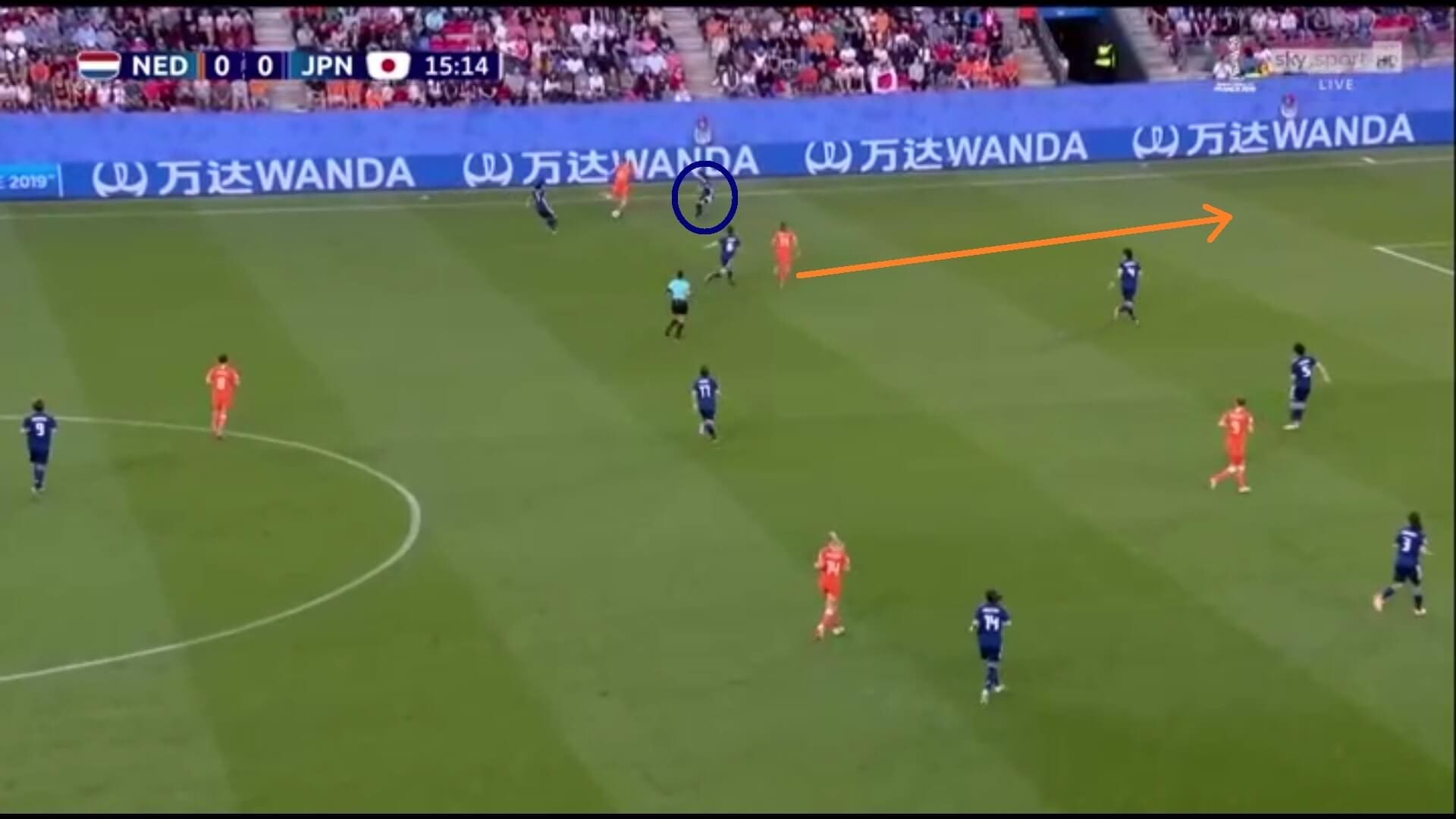
The above images illustrate the fluency of the Dutch player’s movement in attack. By covering wide positions, both van de Donk and Groenen provided the Netherlands with another option in attack and defence. Going forward, as shown by van de Donk, the Japanese full backs were pulled out of position to exploit space for crossing opportunities for Miedema to profit. The main threat going forward for the Dutch comes from their width, applying crosses to the clinical Miedema, who has scored an impressive 60 goals in 78 caps for her national team.
As the Dutch opted to build with long passes from the back, it was easy for them to win these knockdowns due to their height advantage over the Japanese side. This meant that the more attacking central midfield pair of van de Donk and Groenen spent much of their time in Japan’s half.
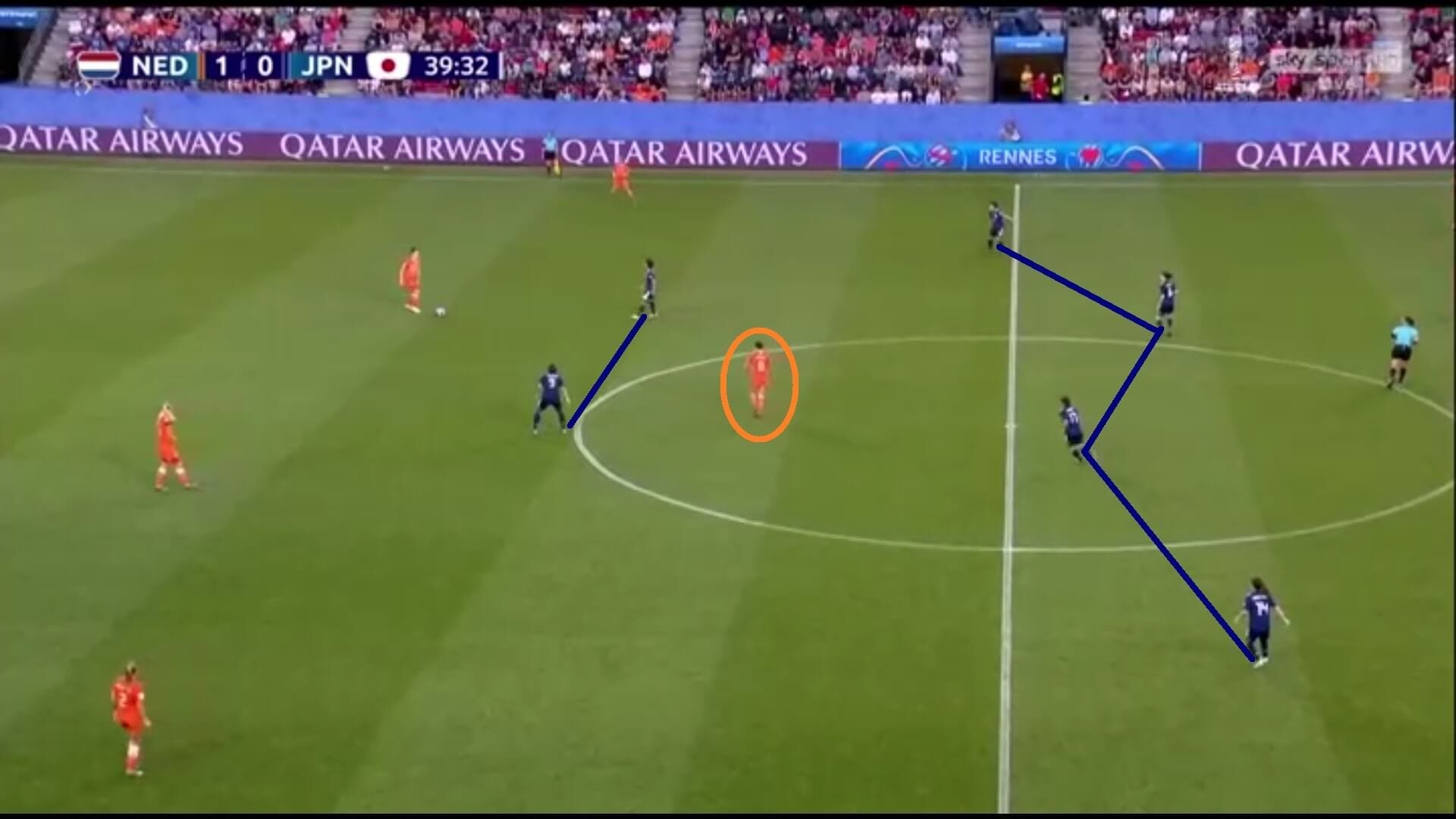
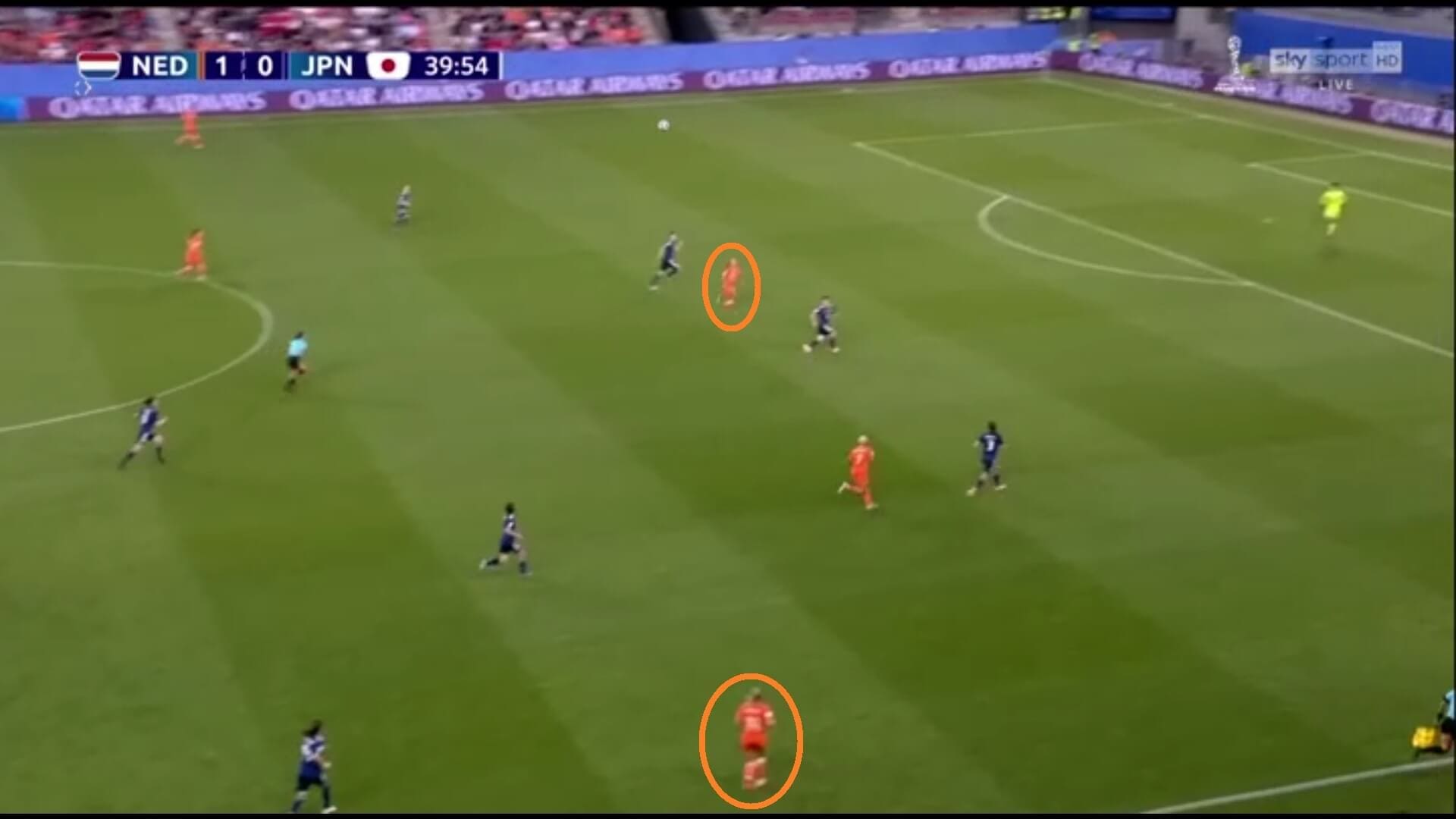
The two above images are key to understanding why the Netherlands dominated the first half of this game. Both van de Donk and Groenen’s commitment to their side’s attack in transition aided their progression of the ball to the final third.
In occupying positions and making runs all over Japan’s half, the Nadeshiko found real difficulty in closing down dangerous players and gaps opened by the Dutch player’s dynamic movement.
Japan’s double-pivot vs Netherlands’ three in midfield
Both teams’ respective shapes played significant roles in the wave of midfield battles. Initially, Japan’s double-pivot of Miura and Sugita were being overrun by the Dutch midfield of Spitse, Groenen and van de Donk.
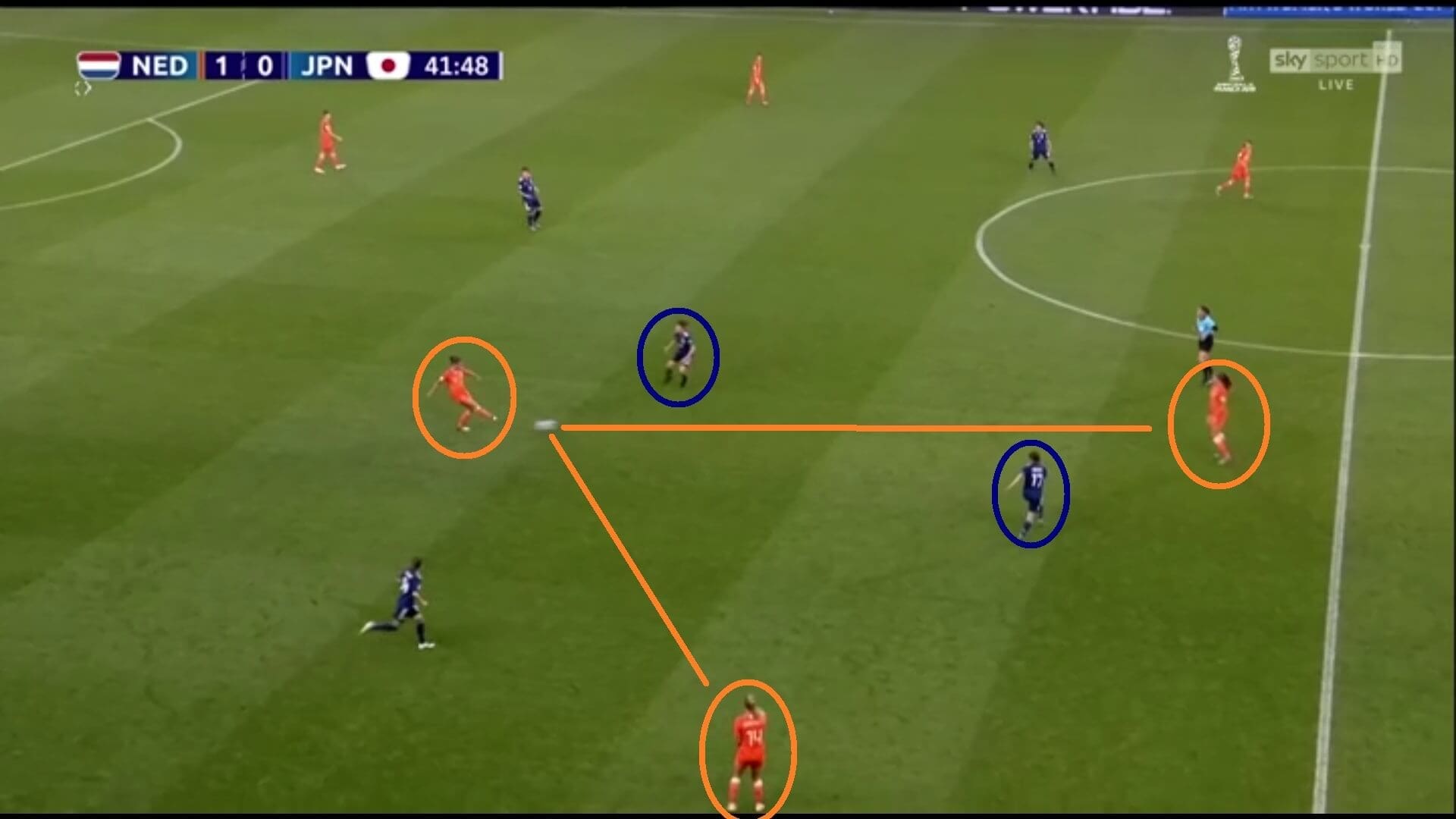
The image above best captured Japan’s struggles in midfield. As Sugita hesitated in pressing Spitse, the Dutch international was granted enough time and space to pick out van de Donk. While this happened, Miura attempted to close down the pass to no avail, opening a progressive passing option to Groenen to build down the right-hand side. Japan’s central midfield pairing struggled to contain the passing and movement of the Dutch midfield three due to the numerical superiority.
This was a particularly alarming ploy for Japan to handle, given the quality of players like van de Donk on the half-turn. The Netherlands’ three in midfield also lent itself to van de Donk and Groenen’s attacking and defensive qualities.
But, in the build-up to Japan’s equaliser, it was Groenen’s all-encompassing role which proved to be her downfall, as she failed to drop back quickly enough to close down Iwabuchi.
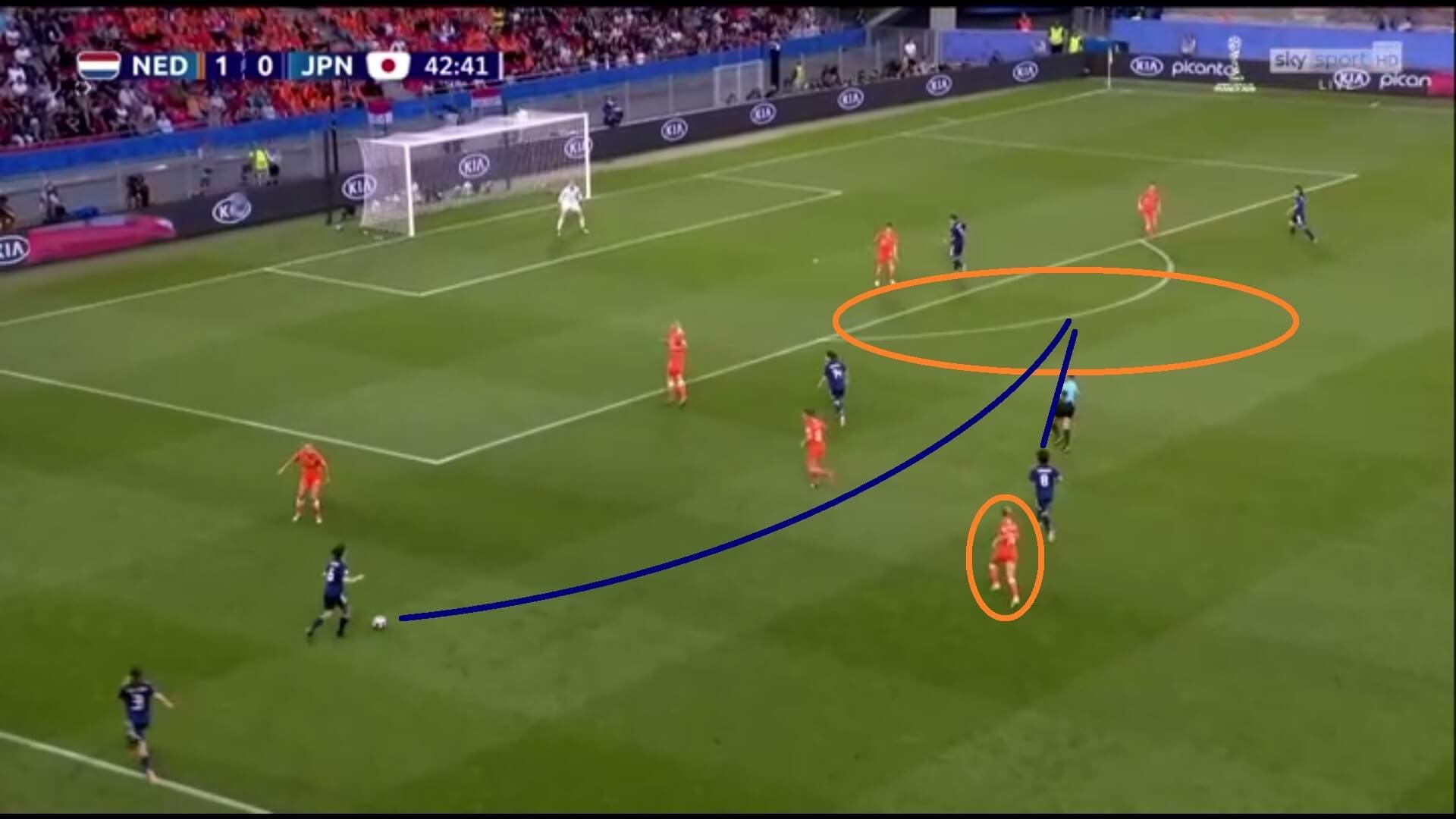
As the Nadeshiko Japan attacked, a pocket of space emerged just outside of the Netherlands’ penalty box, which Iwabuchi ventured into. Sugita found her attacker, who was closely followed by Groenen, executed a quick exchange with Sugasawa and found Hasegawa who equalised.
A well-worked goal, it was difficult to assign blame to any Dutch player on first glance. However, it appeared that Groenen did not drop back into position as quickly as her teammates might have hoped, leaving such a dangerous gap in front of the Dutch defence. Spitse was pre-occupied with Hasegawa and Sugita, should she choose to dribble the ball forward.
This left Groenen as second-best in the challenge to retrieve the ball during Iwabuchi’s exchange with Sugasawa, as the ball was perfectly played to Hasegawa to dispatch.
Conclusion
There were points in the game where it felt as if Japan would progress against all odds. But this was not meant to be. Nevertheless, the Nadeshiko can still take pride in incisive play and ingenuity in tight spaces.
Going into the tournament, Mana Iwabuchi was highlighted as a player to watch for Japan. After four games, it has been clear that the best of Japan’s chances was constructed by Iwabuchi and her ingenuity led to Japan’s impressive equaliser.
The Netherlands, on the other hand, dug deep and hung on after disappointing performances from van de Sanden and Miedema. It seemed as though many, including the Dutch, under-estimated the technical quality of the Japanese side.
Regardless, Japan should be proud of their performance and the Netherlands will have some work to do to avoid performing so shakily against Italy on Saturday.
If you are following the FIFA Women’s World Cup 2019 then you will find our FREE tactical preview magazine the perfect compliment to the tournament. You can download it HERE – each nation is previewed and we also profile their key player and young player to watch. Enjoy!

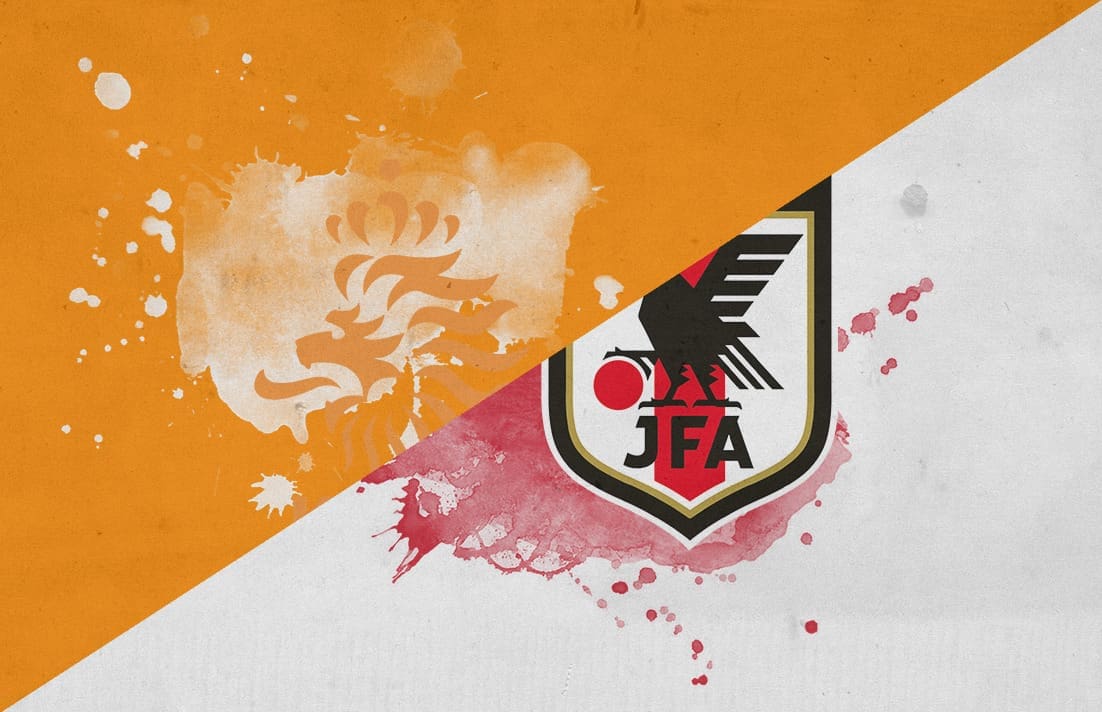




Comments